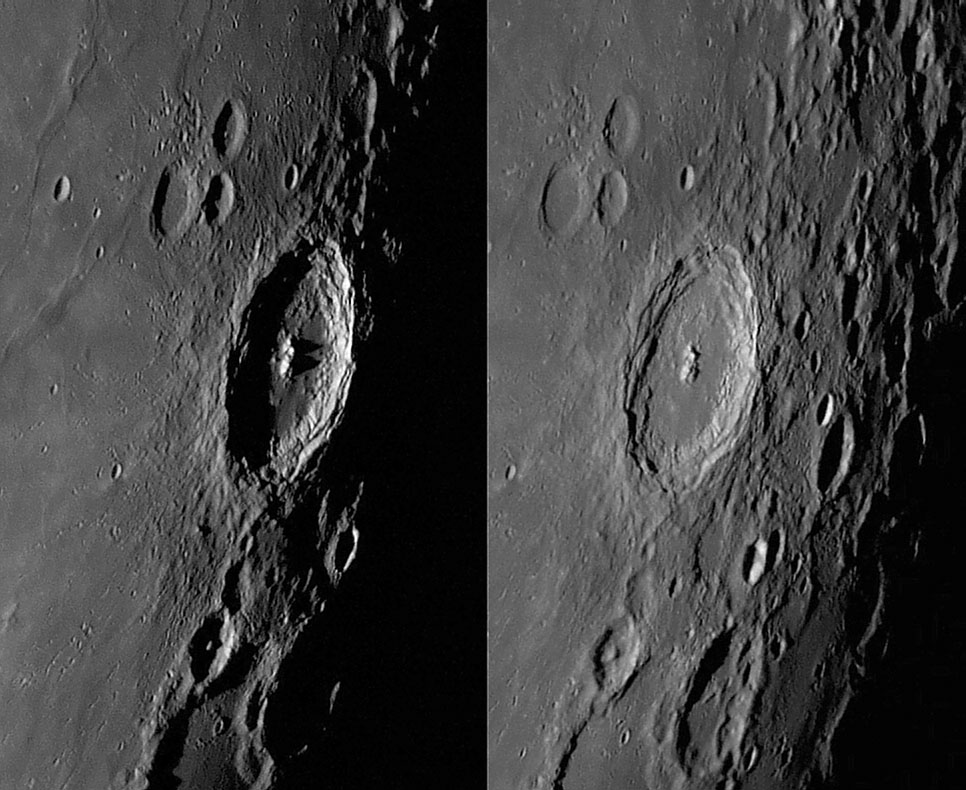April 12, 2012
Best View in the Solar System

image by Prof. Ricardo Jose Vaz Tolentino, Brasil
You can observe Mars, Jupiter or Saturn - the most spectacular planets for telescopic observation - and never see such dramatic changes as we see night to night on the Moon. The Shoemaker-Levy 9 Comet impacts of 1994 were amazing and rapid changes on Jupiter, and the great white spot outbreak on Saturn provided a specacular show last year. But these were once in a lifetime events, occuring only over limited latitude zones. The entire surface of the Moon changes continuously, with the angle of illumination changing about a half degree per hour. Careful observing over just a dozen minutes reveals the Sun's morning rays spread across a crater's floor, or a crater's rim disappear into 14 days of darkness. Ricardo's two images show how much a crater's appearance changes in just 9 hours difference in phase, and why a one time observation does not reveal everything about a feature. The left, low Sun view clearly shows the lines of secondary craters and radial ridges coming from Langrenus. The right, higher Sun image reveals the interior of the crater and in a wider field of view would show rays. Sometimes observers in past centuries mistook the changing appearance of a crater with a physical change there. But rather than being confused, enjoy the luxury of seeing a heavenly body under changing illumination.
Chuck Wood
Technical Details
Left Picture: 03/10/2012; 01:10 Local Time (04:10 UT);
Right Pictute: 04/08/2012; 01:48 Local Time (04:48 UT);
SkyWatcher 12" Dob Collapsible Truss-Tube + Celestron Ultima 2X Barlow + Orion StarShoot Solar System Color Imager III.
Related Links
Rükl plate 49
Ricardo's website
Yesterday's LPOD: Rebirth
Tomorrow's LPOD: A Tilting Tale
COMMENTS?
Register, Log in, and join in the comments.



